Santiago Calatrava highlighted buildings, influences and style

Born in 1951 in Benimàmet (Spain)
Architectural style and influences of Santiago Calatrava
Santiago Calatrava, the renowned Spanish architect, engineer, and artist, is known for his distinctive architectural style that combines elements of engineering, sculpture, and architecture into breathtaking and innovative designs. Here are some key characteristics of Calatrava's architectural style:
Organic Forms and Movement
Calatrava's designs often evoke a sense of movement and fluidity, resembling organic forms found in nature. His structures can appear as if they are in motion, capturing the essence of dynamic movement. This is evident in his use of sweeping curves, flowing lines, and asymmetrical shapes that create a sense of energy and vitality.
Structural Expressionism
Calatrava's background in civil engineering greatly influences his architectural style. He often exposes the structural elements of his buildings, using materials such as steel, concrete, and glass in innovative ways. His structures are celebrated for their technical complexity and the artful display of structural systems, creating a sense of transparency and lightness.
Innovation in Materials and Technology
As a pioneer in the use of new materials and construction techniques, Calatrava's buildings push the boundaries of what is possible in architecture. He has utilized materials like steel, glass, and reinforced concrete to create buildings that appear weightless and ethereal. His designs also incorporate cutting-edge technologies for sustainable energy and environmental efficiency.
Organic Inspiration
Calatrava draws inspiration from the natural world, often referencing forms such as wings, leaves, and skeletons in his designs. This organic influence can be seen in the graceful arches, rib-like structures, and soaring cantilevers that define many of his buildings. His structures often feel harmonious with their natural surroundings, blurring the line between architecture and nature.
Iconic Elements
Several recurring elements have become iconic in Calatrava's work. These include the use of a single, soaring mast or spire that reaches skyward, evoking a sense of aspiration and transcendence. He also frequently incorporates shell-like structures, bird-like forms, and the motif of the human figure in motion, adding a sense of poetry and symbolism to his designs.
Integration of Art and Architecture
Calatrava's work blurs the distinction between architecture and sculpture, with many of his buildings functioning as works of art in their own right. He often collaborates with artists to integrate sculptures, murals, and other artistic elements seamlessly into the architecture, creating a unified and immersive experience for visitors.
Iconic Works
Some of Calatrava's most famous works include the City of Arts and Sciences in Valencia, Spain, with its futuristic white forms resembling a futuristic cityscape; the Turning Torso in Malmö, Sweden, a twisting residential tower that stands as an architectural marvel; and the Oculus transportation hub in New York City, a monumental structure evoking the image of a dove in flight.
In conclusion, Santiago Calatrava's architectural style is a unique fusion of art, engineering, and nature. His designs are characterized by their organic forms, structural expressionism, innovation in materials and technology, and integration of art and architecture. Each of his buildings tells a story of movement, elegance, and a deep connection to the natural world, leaving a lasting impression on those who experience them.
Highlighted buildings of Santiago Calatrava:
-
Olympic Indoor Hall Nikos Galis (Marousi)
-
St. Nicholas National Shrine (New York)
-
Lusitania Bridge (Mérida, Badajoz)
-
Zubizuri (Bilbao)
-
Oberbaumbrücke (Berlin)
-
Stadelhofen Station (Zürich)
-
Palacio de Congresos de Oviedo (Oviedo, Asturias)
-
Queen Sofía Palace of the Arts (Valencia)
-
Tenerife Auditorium (Santa Cruz Tenerife)
-
Tenerife International Centre for Trade Fairs and Congresses (Santa Cruz Tenerife)
-
Assut de l'Or Bridge (Valencia)
-
Montjuïc Communications Tower (Barcelona)
-
Llonja de Sant Jordi (Alcoi, Alicante)
-
Olympic Stadium (Athenes)
-
Margaret Hunt Hill Bridge (Texas)
-
World Trade Center Station (New York)
-
Puente de la Mujer (Buenos Aires)
-
La Ciutat de les Arts i les Ciències (Valencia)
-
Auditorio de Tenerife (Santa Cruz de Tenerife)
The Auditorio de Tenerife, located in Santa Cruz de Tenerife, Canary Islands, Spain, is a stunning and iconic cultural center designed by the renowned Spanish architect Santiago Calatrava. Completed in 2003, the auditorium has become one of the most recognizable landmarks on the island of Tenerife, known for its striking and futuristic architecture. Here are some details about the architecture of this magnificent building:
Design Concept:
-
Turning Torso (Malmö)
The Turning Torso is a spectacular skyscraper located in Malmö, Sweden, designed by the renowned Spanish architect Santiago Calatrava. Completed in 2005, it stands as the tallest building in Scandinavia, reaching a height of 190 meters (623 feet) with 54 stories. The tower is a stunning example of modernist architecture and a landmark in the city's skyline. Here are some details about the architecture and design of the Turning Torso:
Design Concept:
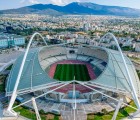

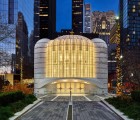
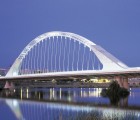
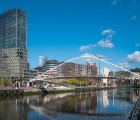
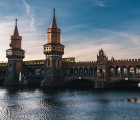
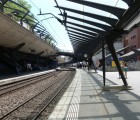
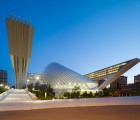
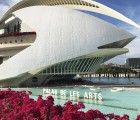

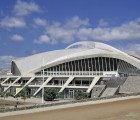
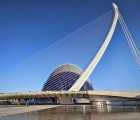
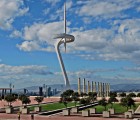
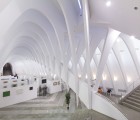
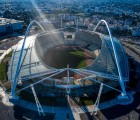





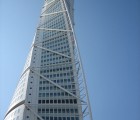
 Antoni Gaudí
Antoni Gaudí  Ban Shigeru
Ban Shigeru  Benedetta Tagliabue
Benedetta Tagliabue  César Pelli
César Pelli  Frank Gehry
Frank Gehry  Gustave Eiffel
Gustave Eiffel 